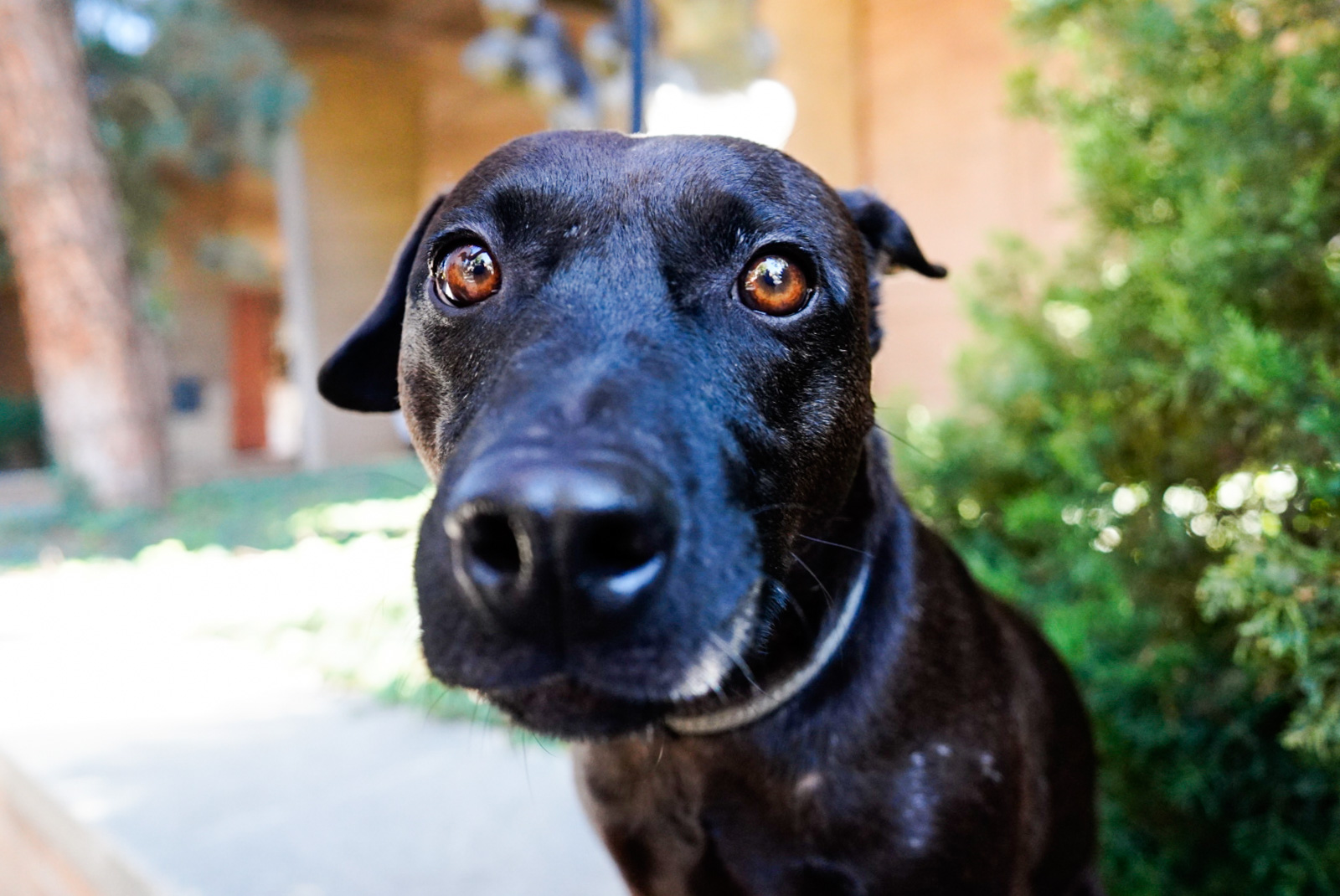Campus Queries: How did dogs become domesticated?

Humans and dogs have been shown to improve one another’s mental health. According to a report in the journal Science, when dogs and humans lock eyes, their brains release oxytocin, the “love hormone” most commonly associated with maternal bonding. (Niveda Tennety/Daily Bruin)
By Nidhi Upadhyay
Oct. 17, 2018 1:26 a.m.
Campus Queries is a series in which Daily Bruin readers and staff present science-related questions for UCLA professors and experts to answer.
Q: Where did dogs come from?
A: If dogs seem preternaturally suited to humans, that’s because they are.
Dogs emerged as a different subspecies from gray wolves about 20 to 30 thousand years ago, said Robert Wayne, a professor of ecology and evolutionary biology. Thousands of years before the advent of agriculture, dogs were companions for hunter-gatherer humans, which makes them the oldest known domesticated animals.
While most researchers agree when dogs evolved, Wayne said there is far less consensus on where domesticated dogs first appeared.
Wayne said there are two major strains of thinking: Some scholars think domestic dogs first emerged in China, because some very old divergent breeds are indigenous to the region; others, including Wayne, think dogs first appeared in Europe since that’s where the oldest dog fossils have been found. Wayne added some scientists claim dogs could have been domesticated contemporaneously in both China and Europe.
Most researchers agree dogs self-domesticated at first, integrating with hunter-gatherer communities because they provided easy access to food, Wayne said.
“(The first dogs) looked like gray wolves and they probably started following humans … and took advantage of the carcasses left behind (by humans),” Wayne said.
The gray wolves that followed humans eventually stopped reproducing with wild wolves, which created two separate groups.
Humans also benefited from the relationship with dogs, as they likely performed functions like herding and guarding, Wayne said. However, they were not directly selectively bred for these or any specific traits at first, he added.
“The original (artificial selection) was somewhat unintentional,” Wayne said. “(Selection) was almost indirect, in the sense that the dogs that … tended not to attack their owners … and the dogs that could live in the close confines of a small village … were the ones that probably got the most food and flourished.”
Thousands of years later, in the Victorian era, dogs were subjected to direct artificial selection that gave rise to the vast gamut of breeds that exist now, Wayne said. Dogs were selectively bred for certain traits, including both functional and aesthetic qualities, Wayne said.
“They loosely grouped dogs into herding dogs, setter hounds, fight hounds,” Wayne said. “That refers to function, but then there are all these toy breeds, … which are mostly for aesthetic purposes and for fashion, really – you might call them fashion breeds.”
Wayne said fashion breeds, so-called toy dogs characterized by a dwarfish stature and foreshortened faces and limbs, were first bred for their oddities.The royal family adopted these unusual, novel-looking dogs like spaniels, greyhounds, dachshunds, collies and pugs as a part of their public image. Toy dogs then came into vogue because of their association with royalty.
“Originally, it was kind of selection for freaks, … for very bizarre-looking dogs with flattened faces or very diminutive toy breeds,” Wayne said.
A present-day parallel can be found in Queen Elizabeth II’s high-profile ownership of corgis. “Corgi,” incidentally, is Welsh for “dwarf dog.”
These days, people treat dogs less like novelties and more like family members. Research suggests human-canine companionships run so deep because humans and dogs have evolved alongside one another for tens of thousands of years.
A 2013 study from the Chinese Academy of Sciences found that humans and dogs underwent similar changes in genes that govern neurology, digestion and responses to cancer.
The study says the parallel genetic evolution related to metabolism and digestion came from the transition from animal- to plant-based diets brought on by agriculture.
Their neurological processes are also linked: Dogs and humans’ brains are similar enough that they respond comparably to medicines used to treat obsessive-compulsive disorder and depression.
Moreover, as reported in the journal Science, humans and dogs have a mutual positive effect on one another’s mental health. When dogs and humans lock eyes, their brains release oxytocin, the “love hormone” most commonly associated with maternal bonding.
Dogs and humans aren’t just alike, they’re good for each other.


